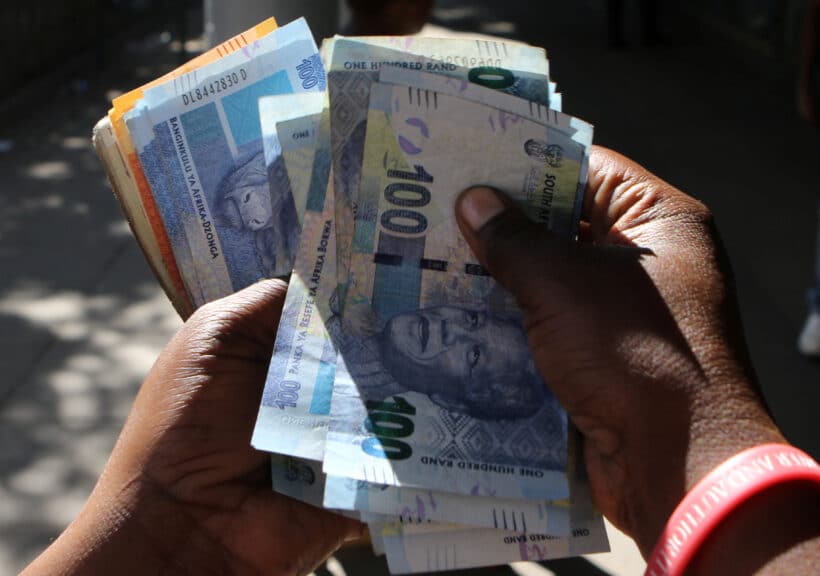Rand steadies as oversight reshapes market narrative
South Africa tightens contract oversight as ZAR=X holds near 17.4 and 10-year yields stay around 9.0%; CPI 3.3%, repo 7.0%, and debt 77% of GDP show governance now steering fiscal credibility and JALSH performance.

South Africa’s intensifying scrutiny of public procurement has evolved into a macro signal shaping risk premia across currency, bond, and equity markets. The fiscal environment is fragile: real GDP growth is forecast around 1.4% for 2025, well below the 3% regional average, while public debt has climbed to roughly 77% of GDP. Interest payments now consume about 22% of main-budget revenue, compressing fiscal space.
Headline inflation eased to 3.3% year on year in September, within the South African Reserve Bank’s 3–6% target band, while the repo rate remains at 7.0% after the Monetary Policy Committee left it unchanged in September. The resulting real yield buffer supports rand carry but does little to offset the credibility premium still embedded in asset pricing.
The mechanism linking governance to markets is increasingly direct. Weak contract enforcement and cost overruns inflate contingent liabilities, erode fiscal efficiency, and widen the sovereign risk premium. Benchmark 10-year government bond yields hover near 9.0%, reflecting investor caution rather than inflation expectations. The rand (ZAR=X) trades around 17.4 per USD, driven as much by domestic governance signals as by global dollar strength.
Each instance of procurement irregularity or delayed audit disclosure adds volatility and widens bond spreads, while credible enforcement announcements compress yields and stabilize the currency. In an environment where monetary and fiscal policy are already constrained, governance credibility has become a de facto stabilizer—or destabilizer—of South Africa’s financial conditions.
The Treasury has moved toward systemic reform, tightening oversight on major tenders and introducing real-time auditing for infrastructure projects. These measures aim to replace post-event investigations with preventive compliance, reducing fiscal leakage and shortening supplier payment cycles.
If consistently applied, they could raise the fiscal multiplier of public investment and improve debt efficiency, allowing modest growth gains without widening the deficit. However, institutional inertia and political interference remain risks; previous oversight initiatives lost momentum once fiscal pressure eased. Without durable enforcement, the current reform wave could revert to short-lived optics, eroding the policy credibility the market is now tentatively rewarding.
Investor positioning mirrors this tension. Nonresident holdings of local debt stand near 25%, well below the pre-2020 level of 35%, underscoring persistent foreign caution. The FTSE/JSE All Share Index (JALSH) is up about 29% year to date, lagging the MSCI Emerging Markets Index despite favorable commodity terms of trade. The underperformance reflects structural skepticism—particularly over execution in energy, transport, and municipal infrastructure—which has constrained valuation multiples. Meanwhile, the 10-year yield spread over U.S. Treasuries, now above 530 basis points, illustrates the governance premium investors demand to hold rand-denominated assets even as inflation subsides and global risk appetite stabilizes.
Compared with peers, South Africa offers high nominal and real yields but weaker policy traction. Brazil, with CPI near 4.2% and a Selic rate at 10.5%, funds long-term debt at roughly 11%, while Indonesia finances 10-year bonds around 6.8% with inflation below 3%. South Africa’s 9.0% yield is therefore less a reward for growth than compensation for uncertainty about fiscal integrity. Each 100-basis-point rise in borrowing cost adds roughly ZAR 17 billion to annual interest outlays, heightening the risk of crowding out capital expenditure and social investment. Sustained procurement reform could narrow the spread by 50–75 basis points over the next 12 months, reducing the debt trajectory’s sensitivity to shocks.
For corporates, contract governance directly influences liquidity management and FX hedging. Delays in payments or project approvals push firms toward shorter-tenor borrowing and higher dollar exposure, reinforcing ZAR volatility. Transparent oversight would reverse that cycle, lowering credit spreads and strengthening domestic investment confidence. In effect, governance reform acts as a parallel policy lever: it adjusts the term premium and stabilizes expectations without altering the policy rate.
The measurable test lies ahead. If by mid-2026 the government sustains transparent procurement audits, maintains inflation within target, and keeps debt below 80% of GDP, bond yields should compress toward 8.25% and ZAR volatility narrow into a 17.0–17.6 range. Absent reform discipline, yields could breach 10% and the rand weaken beyond 18.0 per USD, reintroducing the structural risk discount that has capped South Africa’s investment potential. The next twelve months will determine whether governance becomes an enduring macro anchor or remains an episodic stabilizer in a persistently high-risk economy.





